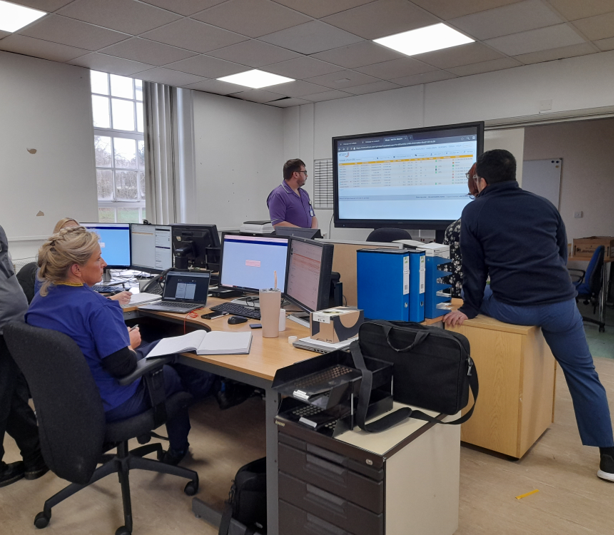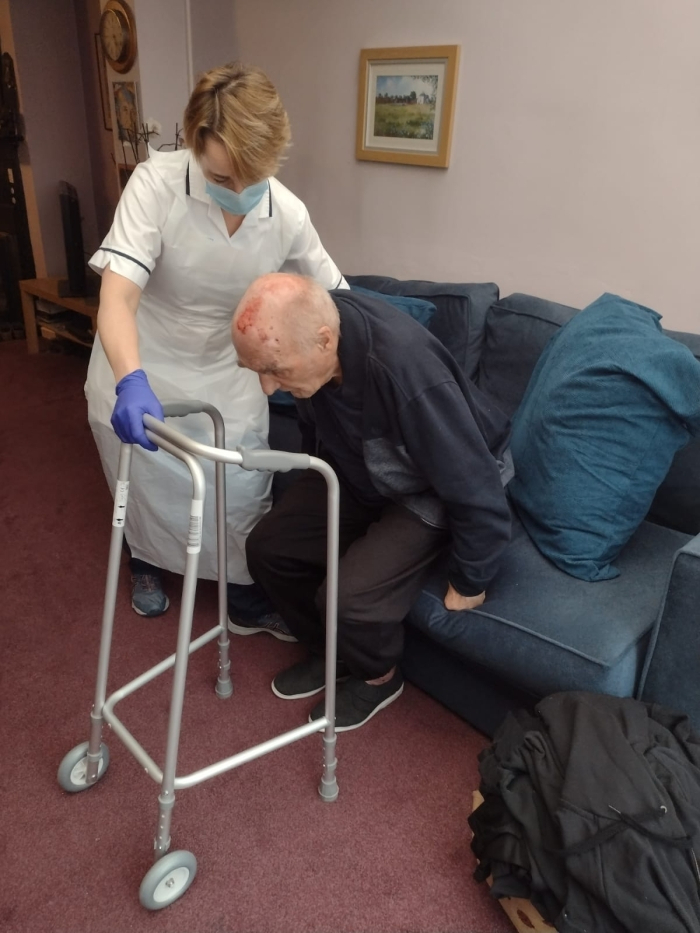Virtual wards operate across the Trust and support people with a range of issues from frailty to acute respiratory infections.
In a virtual ward, support can include remote monitoring using apps, technology platforms, wearables and medical devices such as pulse oximeters. Support may also involve face-to-face care from multi-disciplinary teams based in the community, which is sometimes called Hospital at Home.
About the service

Virtual wards provide acute clinical care to patients in their homes. This is delivered by multidisciplinary teams (MDT) and often led by a named consultant practitioner such as a nurse or Allied Health Professional consultant, or a suitably trained GP with relevant experience and training. Our virtual wards aim to:
- Provide safe and optimal care to patients with acute exacerbations of respiratory conditions including COPD, bronchiectasis and pulmonary fibrosis.
- To reduce demand for inpatient beds with our acute partners and therefore the risks of nosocomial infection associated with busy wards and Emergency Departments.
- Identify patients who are showing signs of early deterioration in the Community by remote monitoring and where clinically appropriate escalate to secondary care.
What we do
 We work with adults aged 18 or over who are:
We work with adults aged 18 or over who are:
- In the acute phase of a crisis related to a deterioration in health and/or functional ability.
- Either living with frailty or a respiratory condition
- Higher acuity patients who would otherwise be in hospital because they require in person monitoring/treatment.
- Have a confirmed or suspected acute respiratory Infection who are stable or improving but require ongoing monitoring that can be safely provided in their home or usual place of residence.
The service utilises technology to optimise care of patients, support communication and enable the effective management of a patient’s condition. Where relevant, patients may measure agreed vital signs and enter data into an app or website. This supports clinical teams to see individual measurements for the patients they are responsible for via a dashboard. The platforms ensure that the team is alerted when any patient moves outside agreed parameters, allowing them to take appropriate action.
Accessing the service
Patients are referred to the virtual ward by a clinician. This often through their GP or as they are discharged from hospital but can also be through other specialists working in healthcare like physiotherapists who can raise concerns about their patient’s welfare or the ambulance services.